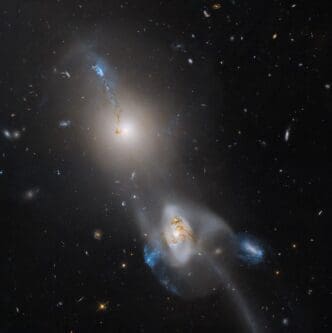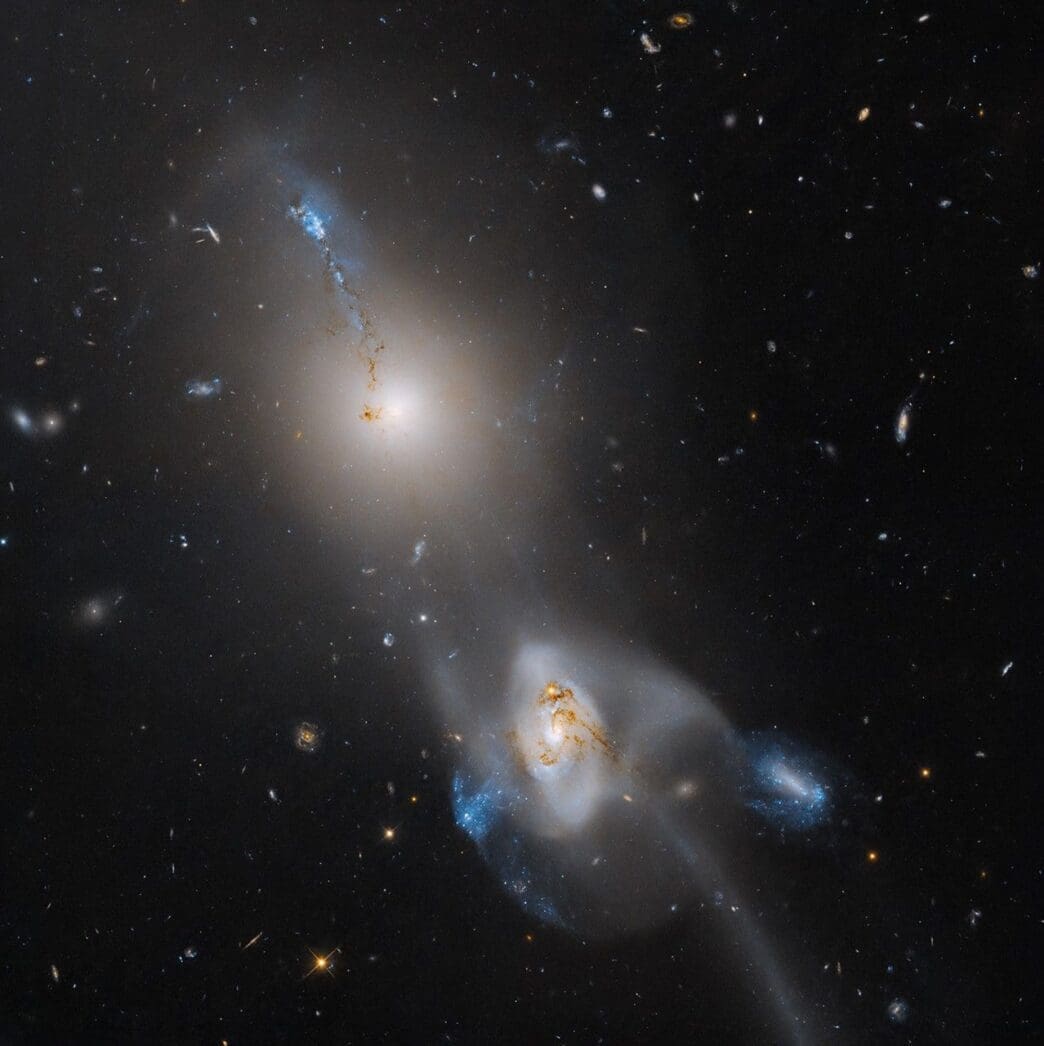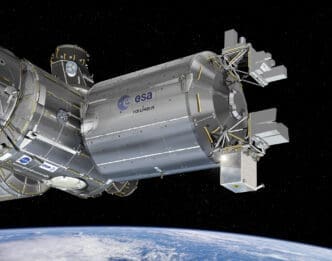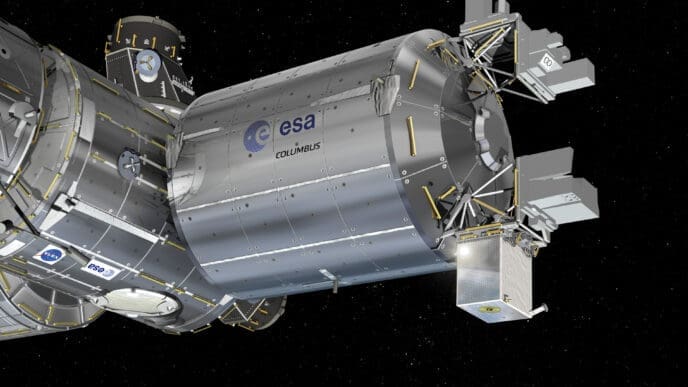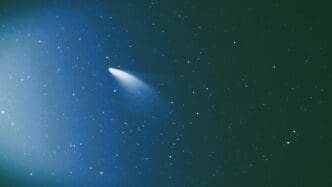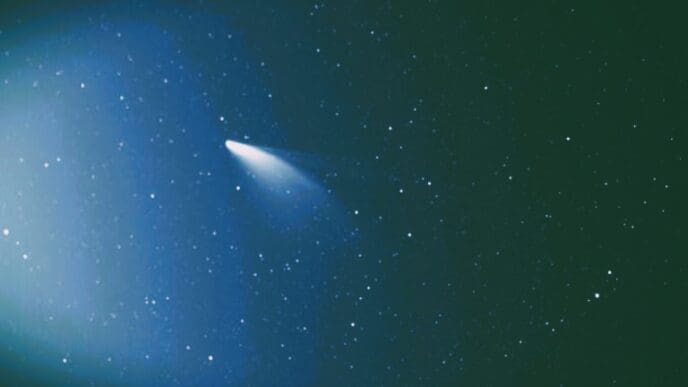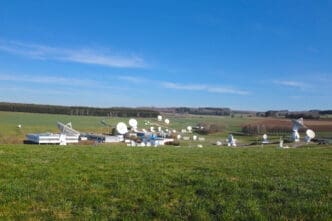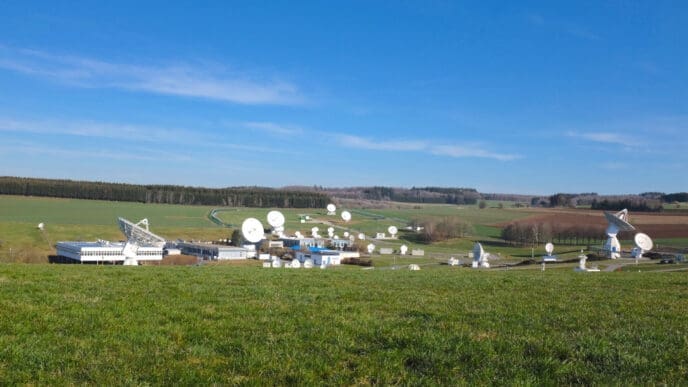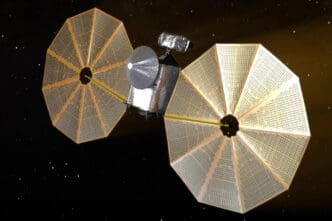Space is not just vast; it’s an ever-evolving masterpiece of cosmic wonders. In a celestial spectacle, NASA’s Hubble Space Telescope captures galaxies in a galactic embrace, aptly forming the shape of a guitar. These galaxies, drawn together by gravitational forces, display a stunning array of features, offering a window into the dynamic choreography of the universe.
Welcome to the universe’s version of a jam session, where galaxies NGC 3561A and NGC 3561B are the main players. Their interaction, known as Arp 105, showcases a vibrant, blue tidal tail of stars stretching over 362,000 light-years. This cosmic dance is not only visually striking but also scientifically significant, offering insights into galactic formations and behaviors.
The Cosmic Guitar Duo
In an amazing show of nature’s artistry, the elliptical galaxy NGC 3561B and spiral galaxy NGC 3561A form a celestial guitar shape in Arp 105. The gravitational forces at play are a marvel, intricately weaving a story of cosmic evolution. The interaction manifests in long ribbons of stars and gas, an astronomical dance of vast proportions.
This guitar shape isn’t just for show. The merger represents an ongoing narrative of cosmic evolution, where two galaxies are entwined in a gravitational ballet. Each twist and turn of their stellar dance adds a note to the cosmic symphony, offering scientists a rare glimpse into how galaxies merge and form new stars.
Star Clusters and Dwarf Galaxies: The Cosmic Orchestra
This gravitational encounter results in a rich tapestry of star clusters and dwarf galaxies, interspersed along the tidal tail. The diversity of these star-forming regions enhances the cosmic melody, showcasing nature’s ability to recycle and renew the material left in its wake.
Ambartsumian’s Knot stands out as a brilliant blue star-forming region. This tidal dwarf galaxy emerges from the debris, akin to a riff in a symphony. Its vibrant star-forming activities highlight the intense gravitational interactions at work, providing a blueprint for understanding tidal dwarf galaxies.
The Distorted Spiral Galaxy
The spiral galaxy, contorted and twisted by gravitational forces, narrates its own story of transformation. Despite the upheaval, it dazzles with regions of intense star formation, each a chapter of new beginnings.
Another area in the spiral galaxy draws attention with its distinct blueness. While it might be part of the network of interactions, its properties suggest it could be a foreground galaxy. Scientists are investigating this anomaly, adding another layer of intrigue to the cosmic performance.
The presence of bright blue regions on the galaxy’s periphery signifies the power of galactic mergers to ignite the stellar cradle of creation. These regions are likely tied to ongoing star formation, spreading the cosmic message of rebirth amid chaos.
The Telltale Tidal Tail
Connecting the two galaxies is a faint, thread-like structure of gas and dust, barely visible but incredibly informative. This tidal tail is more than just a relic of gravitational pull; it holds clues to the timing and mechanics of galactic collisions.
These faint tendrils are essential to researchers. They offer insights into the time scale of cosmic evolution and the mechanisms fueling star formation in post-merger environments.
Multiple background galaxies have been observed through this merging system, painting a backdrop rich with astronomical history and adding depth to the cosmic tale.
Ambartsumian’s Knot: The Bright Blue Marvel
Ambartsumian’s Knot is a striking feature, an area of intense star formation fed by the debris of its galactic parents. This knot not only adds a pop of color but also underscores how tidal forces can spur new galactic formations.
Positioned at the base of the ‘guitar’, Ambartsumian’s Knot is a frontier of stellar birth, where the chaos of collision births new arrangements of stars. It’s a reminder of the galaxy’s adaptability and the universe’s ceaseless cycle of destruction and creation.
The Crowded Cluster: Abell 1185
Abell 1185 is a bustling cluster, home to at least 82 galaxies, including Arp 105. This congregation of galaxies is a hotbed of interactions, providing astronomers with an opportunity to study galaxy dynamics on a grand scale.
The chaotic nature of Abell 1185, steeped in interactions and wandering clusters, offers astronomers a playground for unraveling the largescale structures and the forces that bind the universe.
Amid the cluster’s dynamism, Arp 105 dazzles as one of its brightest members, contributing to the vibrant interstellar community with its ongoing cosmic performance.
Exploring the Cosmic Web
The merger, a jewel among a sea of galaxies, is a testament to the vastness and complexity of the universe. Through this colossal interaction, we glimpse the intricate web of cosmic interactions shaping the galaxies we know today.
Each galaxy interaction acts as a piece of a grand puzzle, contributing data and insight that widens our understanding of the cosmos. Hubble’s observations of these interactions are crucial in piecing together how galaxies evolve and mature.
The Hubble telescope continues its mission to unravel the mysteries of these cosmic interactions, providing astronomers with detailed images and data crucial for understanding the fabric of space.
The Background Canvas: Distant Galaxies
Set against a backdrop of countless distant galaxies, the merging duo of Arp 105 takes center stage but isn’t alone in the vast cosmic theater. The interplay of nearby and far-off galaxies enriches the visual spectacle and ground of research.
These background galaxies serve as a testament to the vastness of the universe. They provide a unique opportunity for scientists to study the structure and dynamics of distant stellar systems.
Despite the visual dominance of the merging galaxies, the smaller, more distant galaxies paint a vivid tapestry that speaks to the boundlessness and intricacy of the cosmos.
The spectacle of Arp 105 is not just a visual delight but a rich source of scientific insights. Through its lens, we learn about the forces that shape our universe and the constant ebb and flow of galactic life. It’s a reminder of the endless wonders lying beyond our planet.

